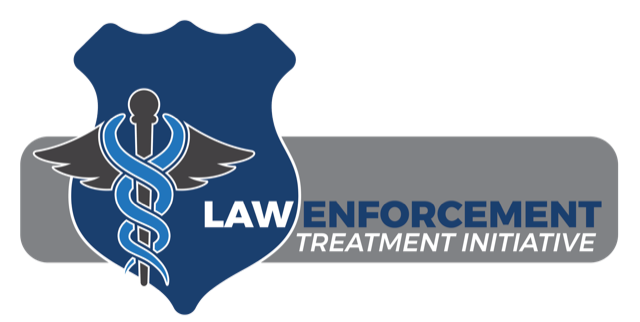In the substance use disorder (SUD) treatment field, an inpatient rehab or residential treatment setting refers to treatment programs where clients live on-site with varying lengths of stay, depending on their treatment plan. Residential rehab provides plenty of structure and support, with 24/7 access to professional staff. While different individuals may need different treatment settings and intensities, treatment in a residential setting is a crucial first step for many clients.
Considering treatment at an “inpatient rehab near me“? Keep reading to learn 5 benefits of residential programs or contact our Treatment and Referral HelpLine at 833.976.HELP (4357) for more information on admissions.
5 Benefits of an Inpatient Rehab Program
The best type of care for an individual often depends on factors like the severity of their SUD, whether they have one or more co-occurring mental health disorders, what their home environment is like, and what their schedule allows for. When a client seeks treatment, a qualified professional will complete an intake assessment and collaborate with the client to create a treatment plan that meets their unique needs. When considering various treatment options, it can be helpful to understand the benefits of participating in treatment in an inpatient residential setting.
Let’s take a look at 5 benefits of inpatient rehab:
1. Clinical and Medical Experts
Clients at an inpatient rehab program have access to a team of clinical and medical experts who are there to help monitor, support, and guide individuals through the early stages of recovery. Going through treatment in a residential program means clients have ‘round-the-clock care and access to team members who can answer questions, help take care of medical needs, and provide immediate support to clients in crisis.
Many professionals who work in inpatient rehab settings have personal lived experience with addiction or SUDs, whether they are in recovery themselves or have loved ones with SUD. Medical staff, clinicians, and counselors who specialize in SUD treatment are compassionate, empathic, and work from a deep level of understanding of what their clients are going through.

2. Inpatient Detox/Withdrawal Management
Depending on the substance, the initial stages of discontinuing drug or alcohol use are accompanied by a period of detoxification. During this time, an individual may experience intensely uncomfortable withdrawal symptoms that can become life-threatening. Individuals who attempt to go through detoxification or withdrawal on their own are at risk of relapsing to relieve withdrawal symptoms. They may also be at risk of medical complications resulting from the withdrawal process.
Certain inpatient rehab programs can provide a safe space for detoxification, with withdrawal management services administered by professional medical staff. Clients can receive life-saving treatment services like Medication-Assisted Treatment (MAT) while discontinuing the use of dangerous drugs like heroin or fentanyl.
3. Peer Support
Addiction can be extremely isolating. While an individual’s close relationships may be damaged, stopping drug or alcohol use can necessitate cutting ties from peers who encourage or facilitate it. Building a sober support network is one of the most important aspects of long-term recovery. For many individuals, this process starts in an inpatient rehab setting.
An inpatient program provides structure and encourages peer support through activities like group counseling sessions. Here, clients can share their experiences and connect with other residents who understand or can empathize. Realizing you are not alone on your journey is often a powerful and healing experience for many individuals in early recovery.
4. A Safe Environment
An inpatient rehab setting provides a judgment-free environment without physical triggers, like the presence of drugs and alcohol or related paraphernalia. It also provides a space away from certain emotional triggers, like family members or others who either use or encourage the use of drugs and alcohol, or misinformed individuals who may view SUD as a moral failing, rather than a chronic condition, and take a punitive approach when communicating their concerns. Starting a recovery journey in a space that provides safety, structure, and support can help an individual gain the tools necessary for long-term recovery.

5. A Continuum of Care
Substance use disorder does not exist in a vacuum. Clients often have unique needs that can only be met by a full continuum of wrap-around services — from detox/withdrawal management and inpatient care to linkages to affordable housing, legal services, and job readiness training. Treatment through an inpatient rehab program can help facilitate access to comprehensive support services. Clients can collaborate with counselors to create an ongoing treatment plan as they step down from residential treatment to intensive outpatient or outpatient services.
Inpatient Rehab at Gaudenzia
Gaudenzia is proud to offer residential addiction treatment programs with varying lengths of stay in Pennsylvania, Delaware, Maryland, and Washington, D.C. Our medical and clinical teams are ready to help anyone struggling with substance use and co-occurring disorders.
Residential treatment services at Gaudenzia include:
- Individual and Group Counseling
- Support for Co-Occurring Mental Health Disorders (in some locations)
- Medication-Assisted Treatment (MAT) as an Option
- Integrated Medical Care (in some locations)
- Linkage to a Broad Network of Resources and Support Services
- Access to Transitional and Affordable Housing Options
- Educational Programming
If you or someone you love needs help with addiction treatment, please contact our Treatment and Referral HelpLine at 833.976.HELP (4357) or email helpline@gaudenzia.org today.
We’re on social media! Follow Gaudenzia on Instagram, Twitter, Facebook and LinkedIn — and don’t forget to subscribe to our YouTube channel for updates and educational content.







